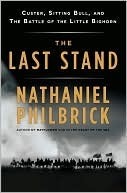More on this book
Community
Kindle Notes & Highlights
Read between
March 30 - May 6, 2018
According to Ernie LaPointe, the agency police did not storm into his great-grandfather’s cabin. They knocked on the door and waited for him to get dressed. Sitting Bull’s son Crowfoot was not, as the agency police claimed, a fourteen-year-old boy. He was actually a seventeen-year-old young man.
During the winter of 1891, some citizens from the town of Mandan, North Dakota, proposed that Sitting Bull’s cabin be purchased from his heirs and transported to Chicago for the upcoming world’s fair. Billed as “Sitting Bull’s Death Cabin,” the structure was reassembled on the midway of the fairgrounds and manned by nine Oglala who showed visitors where bullets had riddled the cabin’s sides.
As Steve Alexander remarked to the reporter from Monroe, it is doubtful whether Custer could have conceived of a future in which a fourth-generation descendant of Sitting Bull’s drank coffee in the living room of Libbie’s childhood home. The Indians, even their most fervent white supporters in the late nineteenth century believed, were about to disappear.
As a cadet at West Point, Custer expressed the conventional wisdom of his day in a paper entitled “The Red Man”: “We behold him now on the verge of extinction,” he wrote, “standing in his last foothold, clutching his bloodstained rifle, resolved to die amidst the horror of slaughter, and soon he will be talked of as a noble race who once existed but have now passed away.”
It was not the Indian who was on the way out in 1876; it was the Indian fighter. In 1890, the year of Sitting Bull’s death, the U.S. Census Bureau declared the frontier officially closed. The Wild West of Custer...
This highlight has been truncated due to consecutive passage length restrictions.
In 1944, the Army Corp of Engineers decided to turn the Missouri River into a series of lakes. It’s been called “the single most destructive act perpetrated against an Indian tribe in the twentieth century.” With the building of five dams in North and South Dakota, the U.S. government flooded 550 square miles of tribal land.
But it was those peoples whose ancestors had assisted Custer’s Seventh Cavalry—the Mandan; the Hidatsa; and Bloody Knife’s people, the Arikara—who suffered the most. With the building of the Garrison Dam in North Dakota, these three tribes lost the very heart of their reservation at Fort Berthold, forcing approximately 95 percent of the agency’s residents to relocate.
“[O]ld people would come to the bluffs around the lake to cry and wail,” he remembered. “They would look out over the water and cry for the loss of the graves of their ancestors and for their lost homeland, lost way of life and community.”
For legions of self-described Custer buffs, the Battle of the Little Bighorn is much like an unsolvable crossword puzzle: a conundrum that can sustain a lifetime of scrutiny and debate.
Some, like Steve Alexander, participate in reenactments of the battle; others research and write articles and attend annual gatherings of fellow battle enthusiasts. In the tradition of Buffalo Bill Cody’s Wild West Show, the battle is, for this group, a fascinating diversion.
For the Lakota and Cheyenne, the battle is something else altogether. Instead of providing a refuge from the troubling complexities of the here and now, the battle and especially its aftermath are an inescapable part of that present.
But there are also some positive signs. Traditional practices such as the sun dance and the use of the Lakota and Cheyenne languages are making a comeback. Some tribes have begun buying back land the government took from them in the nineteenth century. Instead of settling for a multimillion-dollar government buyout of the Black Hills at the end of the twentieth century, tribal leaders continue to hold out hope of one day reclaiming this vast territory as theirs. Contrary to the expectations of their nineteenth-century conquerors, the Lakota and Cheyenne have endured.
Ernie LaPointe spoke of his great-grandfather and the Battle of the Little Bighorn: “Historians are always saying that we are a defeated people, but slaughtering the buffalo, disarming and massacring old men, women, and children like they did at Wounded Knee doesn’t constitute victory. After all these years, after everything that’s happened, we still have the colors we won at the Little Bighorn, and that makes us strong.”
In the end, Custer’s smile remains a mystery, and people will make of it what they will.
Dorsch Memorial Library in Monroe, Michigan, for making available one of the best collections of Custer-related books in the world;
“[J]ust as we are outsiders to other cultures,” writes the ethnographer Raymond DeMallie, “we are also outsiders to the past.
Throughout the book I remain a curious outsider doing my best to make sense of it all.
It is also my firm belief that the spiritual and visionary aspects of experience are essential to understanding not only Sitting Bull but also Custer and his wife, Libbie, who, after all, saw a troubling vision of her husband’s fate as the Seventh marched through the mist at Fort Lincoln.
In two film documentaries and the book Sitting Bull: His Life and Legacy (2009), LaPointe relates the oral traditions passed down to him from his grandmother Standing Holy (Sitting Bull’s daughter) to his mother, Angelique.
Richard Slotkin’s The Fatal Environment is another fundamental work that examines the intersection between history and myth, while Michael Elliott’s Custerology traces how that intersection has manifested itself in modern-day responses to the battle.
James Willert’s Little Big Horn Diary,
When it comes to the Native side of the battle, I have looked to Joseph Marshall’s The Day the World Ended at Little Bighorn, James Welch’s Killing Custer, and Gregory Michno’s Lakota Noon.


